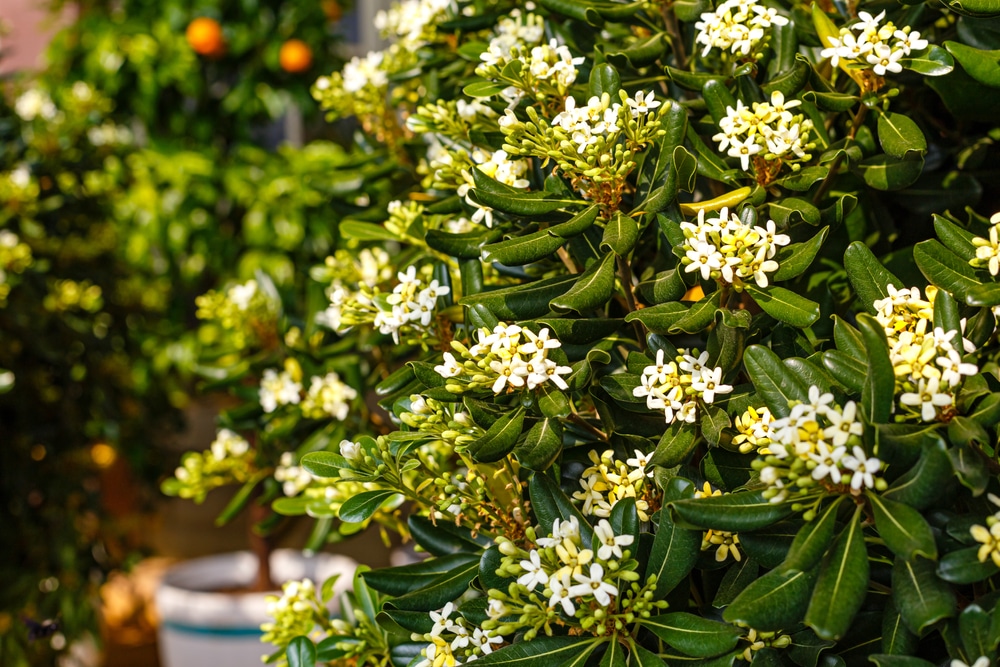Oranges are a delicious and nutritious fruit, but they are also beautiful. For this reason, many property owners choose to grow orange trees as decorative pieces. While you can grow full-sized traditional fruit trees, you may also opt to grow ornamental orange trees.
Ornamental orange trees are smaller orange trees that mainly serve a decorative purpose. While the fruit they produce is technically edible, it is usually too bitter for most people’s tastes.
A few different orange tree species work well as aesthetic plants. Read on to learn more about the best ornamental orange tree options.
Calamondin Citrus Tree

The calamondin citrus tree is the most common choice for an ornamental orange tree, so much so that when most people say ornamental orange tree, they mean a calamondin citrus tree.
Calamondin citrus trees are short trees with bushy leaves. These trees have gorgeous orange blossoms with a delicious citrus scent that can fill your home or garden and produce a small citrus fruit similar to a mandarin orange or a tangerine.
This type of tree is usually easy to grow. Calamondin citrus trees are cold citrus plants, meaning that you can grow this ornamental orange tree outside even if you live in a cooler climate. Ideally, a calamondin citrus tree should be placed outside in full sunlight.
A calamondin citrus tree doesn’t need excessive watering and should only be watered when the top one inch of soil is dry. You may need to water your tree more if you are going through a drought.
In addition to watering your tree, you should use a half-strength fertilizer during the winter and a full-strength fertilizer during the peak growing months.
Calamondin citrus fruits can be harvested throughout most of the year and work well in marmalades and as beverage garnishes.
Bitter Orange Tree
The bitter orange tree is also called the Seville orange tree or the marmalade orange tree. Similar to the calamondin citrus tree, the bitter orange tree is a cold citrus plant that produces bitter fruit.
People often view bitter orange trees as ornamental orange trees outside of an orchard setting, since most individuals don’t enjoy eating the bitter oranges. The trees grow in a straight, streamlined shape that makes them quite the statement pieces in your landscaping design.
Since bitter orange trees are such hardy trees, they are a great option for low-maintenance ornamental orange trees. Although this tree does great in full sun and a warm climate, it also thrives in partial shade and short-term cold temperatures.
Bitter orange trees don’t need much water, and you will only need to water when the top layer of soil becomes dry. If you want to maintain your bitter orange tree’s health, you will need to prune the dead branches and leaves at least once a year.
As the nickname marmalade tree implies, bitter oranges make tasty marmalades and preserves. These fruits are also useful as aromatic ingredients in soaps and essential oils.
Final Thoughts
Orange trees are a relatively attainable plant to grow in your yard. If you are mostly interested in the visual impact of an orange tree, an ornamental orange tree is ideal, since it doesn’t require much care and can usually handle colder temperatures.
Whether you grow a full-sized tree in your backyard or tend to a small, manicured potted tree by a window, an ornamental orange tree will add fantastic colors and scents to your home.
